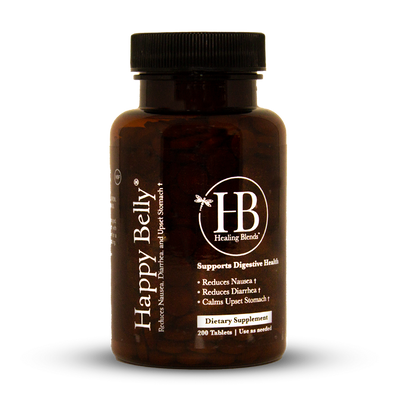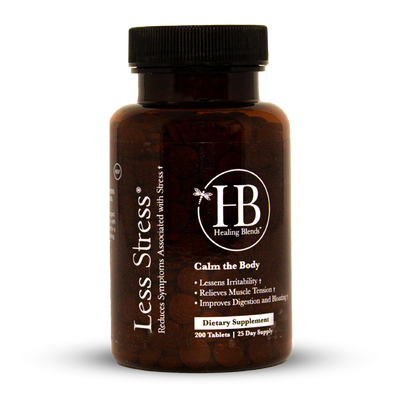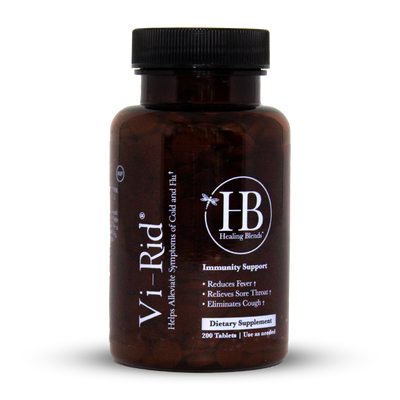Understanding Candida Yeast Overgrowth: Symptoms, Diagnosis, Treatment and Solutions
Candidiasis is a yeast overgrowth that is one of the most common conditions among patients, especially women, who visit my clinic. Among thousands of patients ailing from Candida overgrowth, some of the most common symptoms reported include digestive problems, IBS, skin issues, chronic fatigue, frequent fungal infections, brain fog, and anxiety.
But there is no need to despair, once Candida overgrowth has been diagnosed there are simple and effective solutions to treat it and reclaim your life. I’ve witnessed hundreds of patients regain their vigor, energy levels, and mental clarity after having successfully overcome Candida overgrowth.
What is Candida?
The human body hosts a wide variety of bacteria and fungus that exist without causing any health problems. Our gut sustains itself like an ecosystem with good and bad bacteria maintaining a delicate and deliberate balance that keeps us healthy. Candida is one such type of yeast, a fungus, naturally found in our body in small amounts, generally in the mouth, stomach, intestines, and skin. It plays an important role in digestion and nutrition absorption.
But if it proliferates beyond a certain quantity, it leads to Candidiasis or Candida overgrowth. Once Candida multiplies, it can break down intestinal walls and enter the bloodstream. This can result in toxic byproducts entering the body and may lead to a rather unpleasant condition called leaky gut. Furthermore, it can cause a wide array of health issues ranging from IBS, depression to chronic indigestion.
What causes Candida? Reasons for Candida Overgrowth:
The body’s aforementioned complex eco-system has in-built checks and balances to maintain and regulate its various biochemical processes. Most healthy individuals normally have enough good bacteria in their gut to prevent Candida from growing beyond optimal levels. But sometimes with the consumption of antibiotics or an excessive intake of refined carbs, a huge chunk of these healthy bacteria are destroyed within a short period of time. Candida thrives on sugar and carbs which provide food for it to flourish; therefore such a diet can also exaggerate their numbers.
Here is a quick summary of well-known causes for a spurt of Candida yeast overgrowth:
- Use of Antibiotics
- Long Term Use of Oral Contraceptives
- Excessive Consumption of Alcohol
- Diets high in refined carbs and sugar
- High-stress Lifestyle
How does Candida Overgrowth Spread Throughout the Body?
Candida has a peculiar ability to change shape to adapt and preserve itself in harsh environments. It is primarily a rounded yeast cell but it can transform into an elongated hyphal cell if there is a hostile shift in temperature or acidity levels in its environment. These transformed elongated cells have the ability to filter through the gut lining, which they aren’t supposed to, and that can lead to IBS or leaky gut.
The gut lining is a thin one cell layer system that is responsible for the absorption of micronutrients from food. Once Candida has breached the gut lining or the intestinal walls, it enters the bloodstream which allows other toxins, microbes, and food particles to intrude. Candida in the bloodstream can be a major cause for concern as it may invade other organs and tissues that can have severe repercussions on an individual’s health. It can go from a mild overgrowth to a leaky gut to full-body problems like oral thrush, skin infections, genital infections, mood disorders, brain fog, and others.
Ten Common Candida Overgrowth Symptoms:
Below are the most common symptoms that indicate there may be an overgrowth of Candida in your body:
- Mood Disorders: Due to the strong connection between our brain and digestion, any imbalance in the gut has an adverse effect on our moods. Candida overgrowth can often result in intense mood swings, brain fog, depression, and anxiety. Individuals suffering from this condition may also feel a lingering sense of anxiety and irritability.
- Fungal Skin Infections: Some common problems include rash, hives, itchy skin, ringworm, eczema, psoriasis, or athlete’s foot. Parts of the body that remain moist like armpits, groin, toenails, etc. are more susceptible to fungal infections.
- Chronic Sinus Infection: An excess of Candida can lead to sore throat, congestion, seasonal allergies, and other sinus related issues.
- Gastrointestinal Issues: Digestion issues are the most common symptom and can be observed in the form of bloating, constipation, cramps, IBS, and diarrhea.
- Recurring Genital and Urinary Tract Infections: Since Candida is already present in the vaginal tract, this symptom is more commonly found in women. This includes redness, swelling, and white discharge, and recurring UTI. It can also be the cause of rectal itching or vaginal itching.
- Joint Problems: Candida can affect the joints of the hip and knee which can lead to arthritis and in some cases bone infections and osteomyelitis. These afflictions are accompanied by stiffness and swelling of the joints; though they are relatively rare but difficult to treat.
- Oral Thrush: Overgrowth of Candida in the oral cavity can lead to white lesions in the mouth and throat or soreness in the tongue which can further spread to the esophagus and lead to difficulty in swallowing food.
- Chronic Fatigue: This is a common symptom of Candida overgrowth where patients complain of brain fog, exhaustion, and a constant feeling of fatigue despite sufficient rest. If Candida overgrowth is left untreated it can lead to chronic fatigue syndrome in the long run.
- Autoimmune Diseases: These can include Hashimoto’s thyroiditis, ulcerative colitis, scleroderma, multiple sclerosis, and rheumatoid arthritis.
- Food Cravings: If you crave foods that are rich in refined carbs or sugar this could be a telltale sign of Candida overgrowth.
If you suffer from any of these symptoms, you can take our simple quiz to check if you have Candida Overgrowth!
Candida Testing & Diagnosis: How do you test for Candida Overgrowth?
Healthcare professionals will diagnose you based on your symptoms, medical history, and lab tests to determine the presence and extent of Candida overgrowth. Blood samples or samples from the infected part of the body need to be tested in the laboratory to examine how Candida growth occurs in their cultures. These tests are conclusive and results are received within a few days.
Candida Antibodies Test - IgG, IgA, and IgM
A blood sample is collected to check the levels of IgG, IgA, and IgM Candida antibodies in this test which can be carried out at any well-equipped lab. High levels of antibodies confirm that the immune system is reacting to Candida overgrowth in some parts of the body.
But it is important to understand that Candida overgrowth can suppress the immune system, especially in immunocompromised individuals, so it would be better to ask your healthcare provider for total IgG, IgA, and IgM level testing along with the Candida antibodies to rule out the possibility of false negatives. I’ve seen lots of immunocompromised patients with blood tests that can often be negative for Candida overgrowth even when stool or urine tests are positive.
Complete blood count (CBC) Test
Candida overgrowth is associated with low WBC (white blood cell) count and CBC tests can provide important clues to indicate the presence of excessive Candida in the body. It is also associated with a pattern of high neutrophil and low lymphocyte count. Even though these are non-specific to Candida, I’ve found these patterns to occur frequently in patients with Candida overgrowth at my clinic.
Stool Testing for Yeast Overgrowth
I personally found this to be the most accurate as it directly checks for Candida overgrowth in the colon or lower intestines and lab results can establish the species of yeast along with a corresponding treatment to cure it. Please ensure that your healthcare provider performs a comprehensive stool test as opposed to the standard test.
Urine Organix Dysbiosis Test
The D-Arabinitol test identifies the presence of a waste product of Candida overgrowth to determine its presence in your gut and small intestines. Elevated levels indicate Candida overgrowth.
How to Treat Candida Overgrowth?
Candida overgrowth is rarely life-threatening but if it spreads into the bloodstream it can lead to chronic problems like IBS, brain fog and arthritis which can disrupt your life. As it spreads further in the body, it can affect vital organs like the brain and heart which may lead to dire consequences and in some cases may even be fatal. That said, Candida Overgrowth is a commonly occurring problem with a fairly simple and effective treatment. To treat Candia Overgrowth, you need a three-pronged attack to limit further growth and restore the balance of good and bad microorganisms in your body with changes in your diet and medical supplements.
Here are three simple steps to begin your battle against Candida Overgrowth and to reclaim your life:
Step One: Changing Your Diet to Inhibit Candida Overgrowth
The first step has to be to address the root cause of this problem and the food you consume plays a key role in restoring you to good health. Start by eliminating the existing Candida in your body by depriving it of foods that support its growth. This step involves eliminating alcohol and processed sugar from your diet and reducing the intake of foods high in carbohydrates (fruit, dairy, legumes, etc.) and starch (potatoes, oats, bread, rice, etc.). Instead, you can consume foods like garlic, aloe vera, coconut oil, and turmeric in your diet as they can help fight Candida infections.
Step Two: Medical Supplements to Cure Candida Overgrowth
While changing your diet will provide relief, it isn’t sufficient to rectify the problem. Once you alter your diet to inhibit further growth of existing Candida, you can proceed to attack it with supplements that disrupt their cell walls. Next, you’ll want to attack the Candida by taking supplements MalCare that destroy Candida’s cell walls. Malcare is proficient in permeating the mucosal cells of the intestine and creates an inimical environment that thwarts the proliferation of yeast. Super Juice Blends aids by decreasing the growth of yeast and promotes the ideal microbe balance in the GI tract. Fructooligosaccharides (FOS) are considered a soluble fiber and prebiotic that supports the growth of beneficial bacteria. Since FOS is not digested it increases the material in the digestive tract and promotes regularity.
Step Three: Probiotics to Restore and Maintain a Healthy Gut Balance
Once you address the existing imbalance, the next step is to use high-quality probiotics to reinstate good gut bacteria. I highly recommend a probiotic supplement that consists of a hundred billion CFUs (colony-forming units) to re-establish an ideal gut microbial balance. A healthy gut will act as a deterrent and keep Candida from causing future imbalances as well. Super Juice Blends aids by decreasing the growth of yeast and promotes the ideal microbe balance in the GI tract. Fructooligosaccharides (FOS) are considered a soluble fiber and prebiotic that supports the growth of beneficial bacteria. Since FOS is not digested it increases the material in the digestive tract and promotes regularity.


























